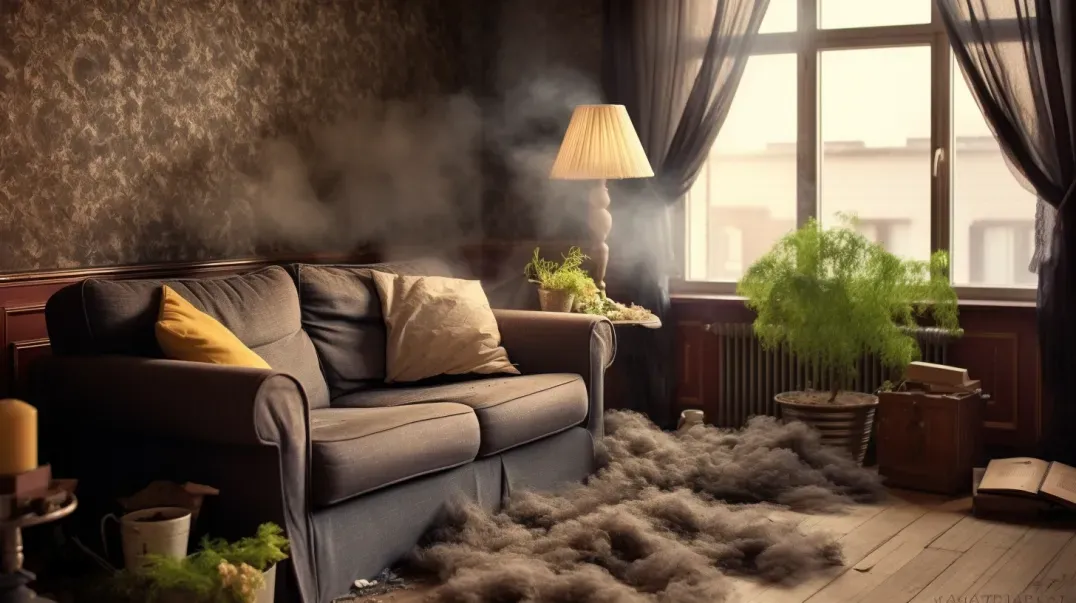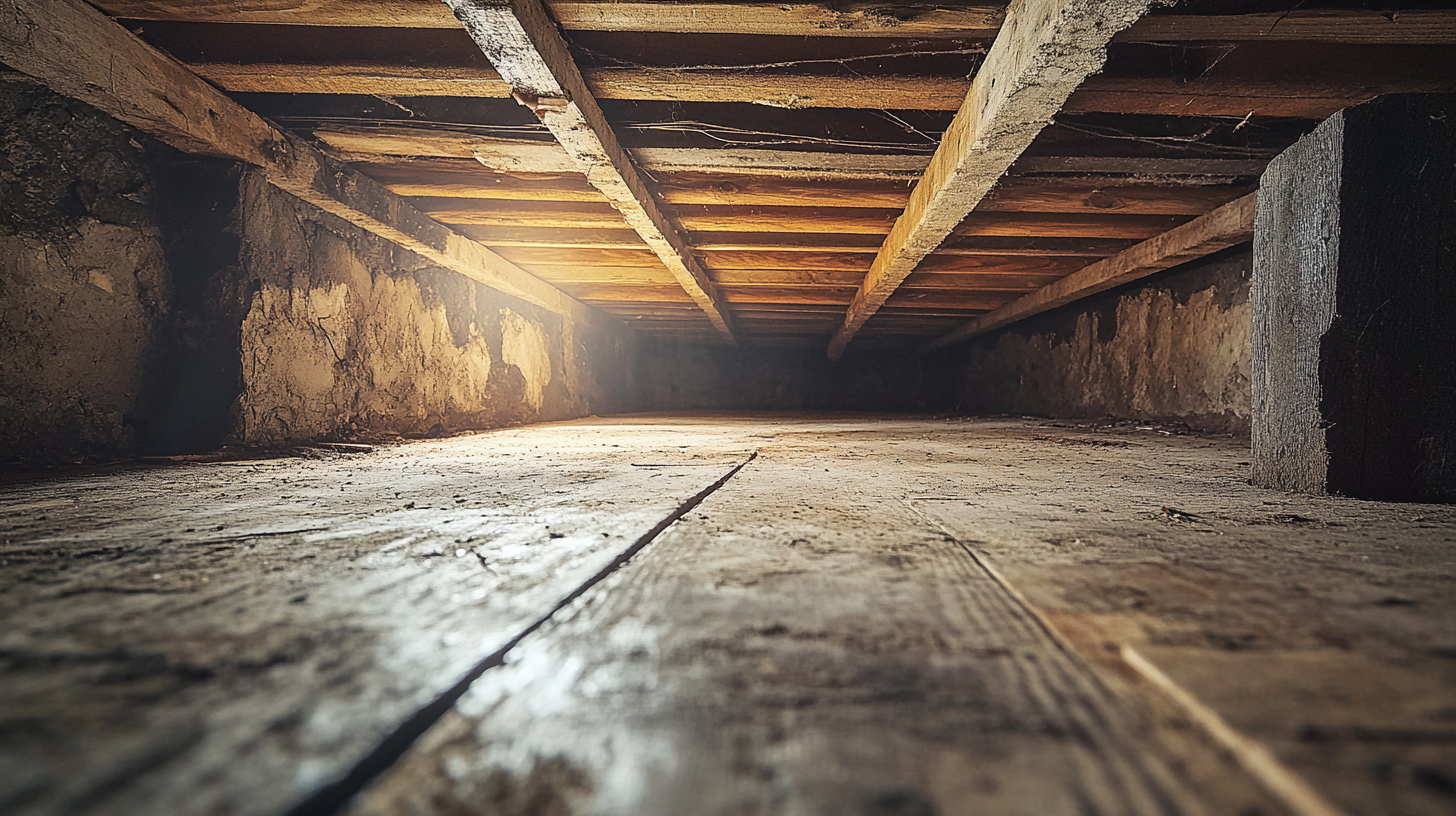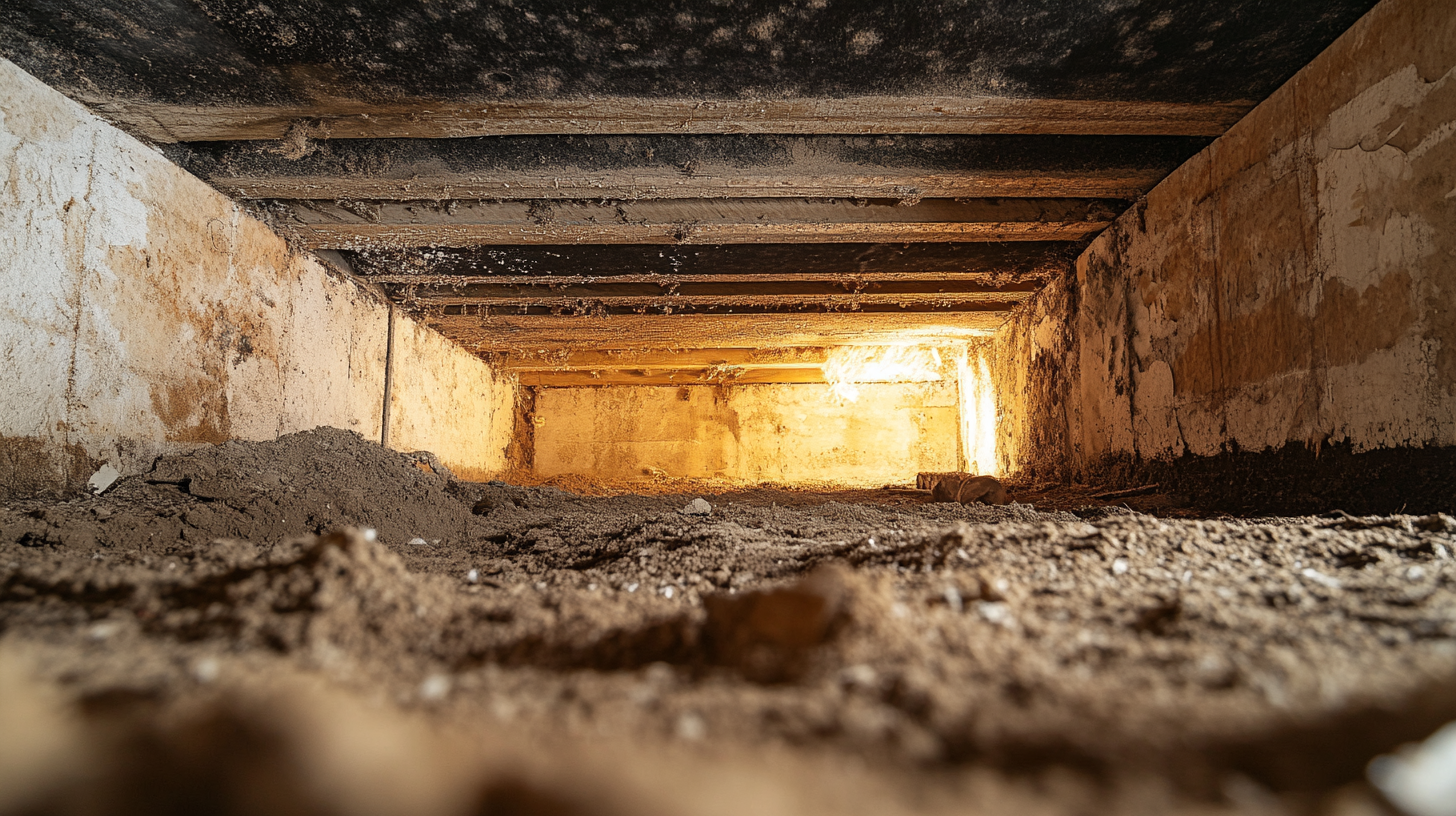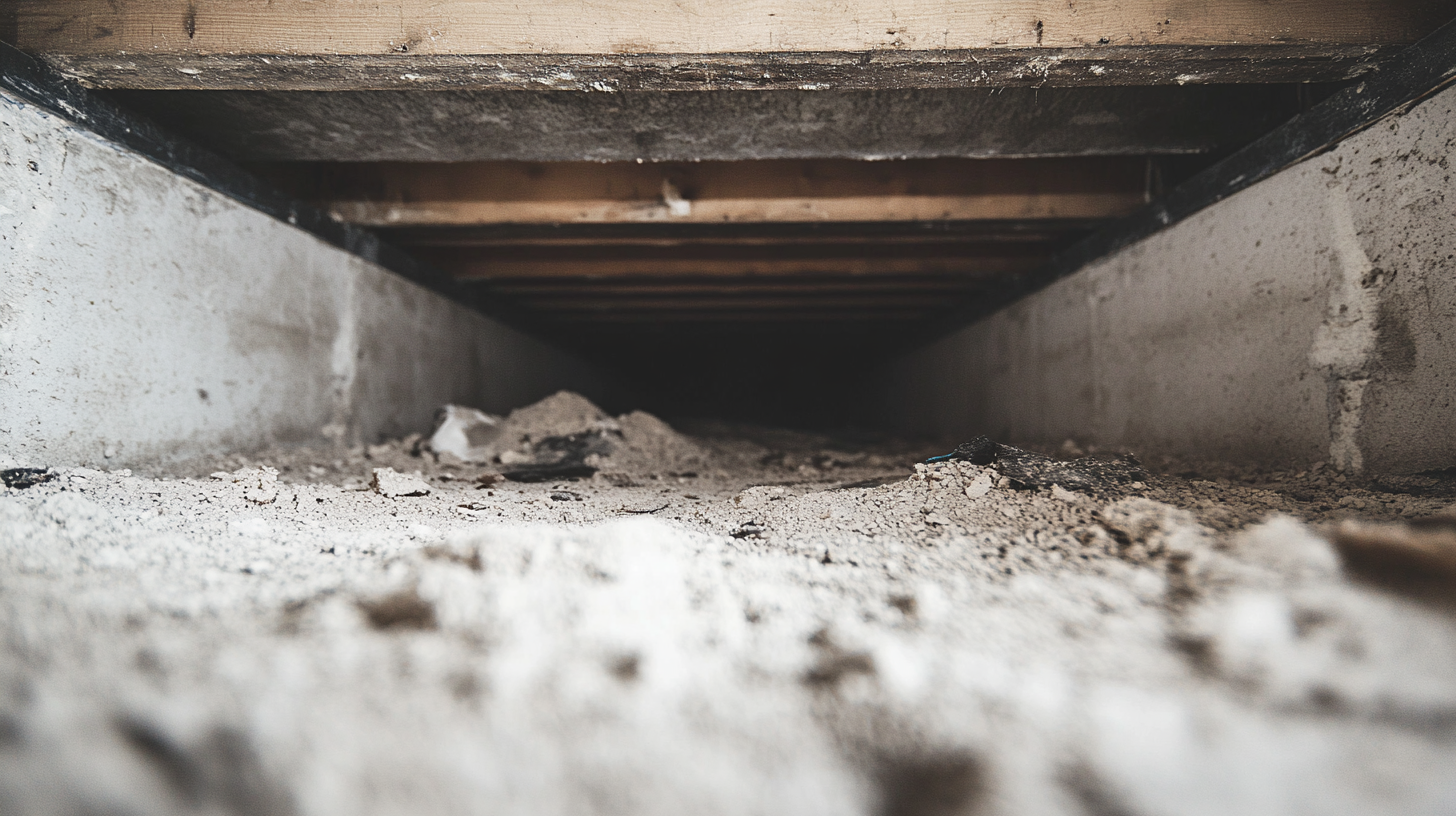Soot Removal from Fabrics: Do's and Don'ts

In our homes, the presence of soot is a subtle yet pervasive issue, often unnoticed until it settles on the surfaces we touch and the fabrics we cherish. From the cozy throws on our couches to the elegant drapes framing our windows, no fabric is immune to its reach. But how does this fine, powdery substance, a byproduct of incomplete combustion, find its way onto our fabrics, silently embedding itself into the very threads of our daily lives?
This blog delves into the journey of soot within our homes, unraveling the processes that allow it to migrate from its source to the fabrics that adorn our living spaces. Whether emanating from the flicker of a candle, the warmth of a fireplace, or even the daily act of cooking, soot particles are airborne travelers, capable of covering distances with ease, ultimately coming to rest on the soft, absorbent surfaces of our fabrics. Understanding this journey is not just about recognizing the sources of soot; it's about grasping the dynamics of indoor air movement and the characteristics of soot that make fabrics a final destination.
Join us as we explore the invisible path soot takes to reach our fabrics, the factors that facilitate its unwelcome deposition, and the implications it has for the cleanliness and longevity of our textile belongings. By shedding light on this often-overlooked aspect of indoor pollution, we aim to arm you with the knowledge needed to protect your fabrics from soot's subtle encroachment, ensuring they remain vibrant and clean for years to come.
Understanding Soot and Its Impact on Fabrics
Soot, a fine particulate matter resulting from incomplete combustion, is more than just a visual nuisance; it's a complex mixture with the potential to harm the fabrics that enrich our homes. From the delicate curtains that filter sunlight to the plush sofas that offer comfort, understanding soot's composition and its interaction with different fabrics is crucial for protecting these valuable items. This section delves into the nature of soot and its effects on various textiles, offering insights into how to safeguard your fabrics from its subtle yet significant impact.
Composition of Soot
Detailed Breakdown of the Particles and Chemicals That Make Up Soot
Soot is composed of carbonaceous particles formed during the incomplete burning of organic materials, such as wood, oil, gas, and even candles. These particles are not uniform; they vary in size, shape, and chemical composition based on their source. Soot can contain a myriad of harmful chemicals, including polycyclic aromatic hydrocarbons (PAHs), metals, and sulfates. These components not only contribute to soot's staining properties but also pose health risks, making its presence on fabrics a concern for both cleanliness and well-being.
How Soot Interacts with Different Fabrics
Discussion on How Soot Adheres to Fabrics and the Potential for Damage
Soot particles, due to their small size and surface properties, can easily adhere to the fibers of various fabrics. The extent of adherence and potential damage depends on several factors:
- Fabric Type: Natural fibers like cotton and wool tend to capture and hold onto soot particles more readily than synthetic fibers, due to their porous structure. However, synthetic fabrics can also attract soot through static electricity.
- Fabric Weave: Tightly woven fabrics may offer some resistance to soot penetration, whereas loosely woven materials provide spaces for particles to settle and embed.
- Soot Particle Size: Smaller soot particles can penetrate deeper into fabrics, making them harder to remove and more likely to cause lasting damage.
The interaction between soot and fabric is not merely superficial. Soot can cause discoloration, weakening of fibers, and, over time, degrade the material's integrity. Moreover, the chemicals within soot can react with the fabric, leading to further damage.
Preparing for Soot Removal from Fabrics
Removing soot from fabrics requires more than just a quick wash; it necessitates a careful approach to ensure the fabric's integrity while effectively eliminating the soot. The first steps towards successful soot removal involve assessing the fabric and implementing initial cleaning measures that prevent further damage. This guide provides essential tips for identifying fabric types and their cleaning suitability, along with guidelines for pre-treatment steps that lay the groundwork for thorough soot removal.
Assessing the Fabric
Tips for Identifying the Type of Fabric and Its Suitability for Various Cleaning Methods
Before attempting to remove soot, it's crucial to determine the type of fabric you're dealing with. This knowledge will guide your cleaning approach, as different materials require different care:
- Check Labels: Look for care labels on the fabric, which can provide valuable information on the material type and recommended cleaning methods.
- Natural vs. Synthetic: Understand whether the fabric is natural (cotton, wool, silk) or synthetic (polyester, nylon). Natural fibers often require gentler cleaning methods to avoid damage, while synthetic fibers may tolerate more robust cleaning solutions.
- Perform a Spot Test: Choose an inconspicuous area to test your cleaning method, ensuring it won't harm the fabric or cause discoloration.
Initial Steps Before Cleaning
Guidelines for Pre-Treatment Steps to Prevent Further Damage
Taking the right initial steps can prevent the soot from embedding deeper into the fabric, making the cleaning process more effective:
- Gentle Shaking: Carefully shake the fabric outdoors to dislodge loose soot particles. Avoid vigorous shaking, which can spread the soot further.
- Vacuuming: Use a vacuum cleaner with a HEPA filter to gently remove soot from the fabric's surface. Hold the vacuum nozzle slightly above the fabric to avoid pressing the soot into the fibers.
Avoid Water: Initially, refrain from using water or liquid cleaners, as they can cause the soot to penetrate deeper into the fabric, making it harder to remove.
Do's of Soot Removal from Fabrics
Successfully removing soot from fabrics requires a careful balance between thorough cleaning and preserving the fabric's integrity. Whether you're dealing with a delicate silk blouse or a sturdy cotton curtain, understanding the right methods for soot removal can make all the difference. This guide offers recommendations for both dry and wet cleaning techniques, ensuring you have the knowledge to tackle soot stains effectively without causing further damage to your textiles.
Dry Cleaning Methods
Recommendations for Removing Loose Soot Particles Without Spreading the Stain
Before introducing any liquids, it's crucial to remove as much soot as possible using dry methods:
- Vacuuming: Gently vacuum the fabric using a nozzle attachment. Avoid direct contact with the fabric to prevent pushing the soot deeper into the fibers. A HEPA filter vacuum is preferred for its ability to trap fine particles.
- Absorbent Powders: For fabrics that can't be vacuumed, lightly sprinkle an absorbent powder (e.g., talcum powder, cornstarch) on the soot stain. Let it sit for a few hours to absorb the soot, then gently brush it off.
- Lifting the Soot: Use a dry, soft-bristled brush to lightly lift the soot from the fabric. Work from the outside of the stain towards the center to avoid spreading.
Wet Cleaning Techniques
Step-by-Step Guide for Washing Fabrics with Soot Stains
Once you've removed as much soot as possible using dry methods, you may proceed with wet cleaning techniques for thorough stain removal:
- Spot Testing: Always perform a spot test on a hidden area of the fabric with your chosen cleaning solution to ensure it doesn't cause damage or discoloration.
- Pre-Treatment: Apply a stain remover or a mixture of water and a mild detergent to the stained area. Suitable stain removers vary by fabric type but generally, a gentle, fabric-appropriate cleaner is recommended.
- Hand Washing: For delicate fabrics, hand wash the stained area in lukewarm water with a mild detergent. Gently work the cleaning solution into the fabric without scrubbing harshly.
- Machine Washing: If the fabric is machine washable, wash it on a gentle cycle with a mild detergent. Consider adding a color-safe bleach if appropriate for the fabric type.
- Rinsing and Drying: Rinse the fabric thoroughly to remove all traces of the cleaning solution. Air dry the fabric away from direct heat or sunlight to prevent shrinking or fading.
Suitable Cleaning Solutions and Stain Removers for Different Fabric Types
- Natural Fibers (Cotton, Wool, Silk): Use a gentle detergent or a specialized fabric cleaner designed for the specific fiber type. Avoid chlorine bleach on silk and wool.
- Synthetic Fibers (Polyester, Nylon): These can generally tolerate stronger cleaning solutions, but always check the fabric care label for specific instructions.
Don'ts of Soot Removal from Fabrics
Successfully removing soot from fabrics is as much about what you shouldn't do as it is about following the correct steps. Missteps can not only set the stain deeper but also potentially ruin the fabric. This guide highlights common mistakes to avoid during the soot removal process and debunks popular misconceptions, ensuring you can tackle soot stains effectively without causing further damage to your textiles.
Common Mistakes to Avoid
Actions That Can Worsen Soot Stains or Damage Fabrics
When attempting to remove soot from fabrics, certain instinctive actions can inadvertently lead to more harm than good:
- Rubbing the Stain: Rubbing a soot stain, especially with a dry cloth, can push the particles deeper into the fabric, making the stain more difficult to remove and potentially damaging the fabric's fibers.
- Using Harsh Chemicals: Applying strong chemicals like bleach directly on soot stains, especially without testing, can cause discoloration or weaken the fabric, particularly with delicate or colored textiles.
- Immediate Washing: Rushing to wash the fabric in water before removing loose soot can cause the stain to spread or set, complicating the removal process.
- Applying Heat: Using a hot iron or dryer on a soot-stained fabric can set the stain permanently, making it nearly impossible to remove.
Misconceptions About Soot Removal
Debunking Myths and Clarifying Why Certain Practices are Ineffective or Harmful
Several myths surrounding soot removal can lead to ineffective or damaging cleaning practices:
- Myth: Any Stain Remover Will Work: Not all stain removers are suitable for soot stains. Using the wrong type can worsen the stain or damage the fabric. It's crucial to choose a remover appropriate for both the fabric type and the nature of the stain.
- Myth: More Detergent Equals Better Results: Using excessive amounts of detergent in an attempt to remove soot stains can leave residues that attract more dirt or require additional rinsing, which can stress the fabric.
- Myth: Immediate Aggressive Cleaning is Best: While prompt action is important, aggressive cleaning methods without first removing loose soot particles or considering the fabric type can embed the stain deeper or harm the textile.
- Myth: All Fabrics are Cleaned the Same Way: Different fabrics require different cleaning methods. What works for a cotton shirt may not be suitable for a silk blouse. Understanding the specific needs of each fabric type is essential for effective soot removal.
Special Considerations for Delicate and Valuable Fabrics
Delicate and valuable fabrics, whether they're part of a cherished garment or a treasured home textile, require a nuanced approach to care and cleaning. The presence of soot on such items not only poses a challenge for removal but also raises concerns about potential damage during the cleaning process. This guide offers insights into handling delicate fabrics like silk, wool, or antique textiles with the care they deserve, and provides advice on when it might be time to consult a professional cleaner to preserve the integrity and beauty of these valuable pieces.
Handling Delicate Fabrics
Special Techniques and Precautions for Fabrics Like Silk, Wool, or Antique Textiles
Delicate fabrics demand a gentle touch and specific cleaning methods to remove soot without causing harm:
- Test Before Cleaning: Always perform a spot test on a hidden area with the cleaning solution to ensure it won't damage the fabric or cause discoloration.
- Dry Cleaning First: Begin with dry cleaning methods such as gentle vacuuming with a HEPA filter or lightly patting with a dry chemical sponge to remove as much soot as possible without wetting the fabric.
- Mild Cleaning Solutions: Use mild, pH-neutral detergents diluted in water for hand washing. Avoid harsh chemicals and bleach, which can degrade delicate fibers.
- Soft Techniques: Gently dab or blot the stained area instead of rubbing or scrubbing, which can damage fibers or cause the fabric to stretch or distort.
- Air Dry: Allow the fabric to air dry naturally away from direct sunlight and heat sources, which can cause shrinking or fading.
When to Consult a Professional
Advice on Recognizing When Professional Cleaning is Necessary to Prevent Irreversible Damage
There are situations where the DIY approach may not be suitable, and seeking professional help is the best course of action:
- Significant or Widespread Stains: If soot has affected a large area or the stain is deeply embedded, a professional cleaner's expertise and equipment are necessary to remove it effectively.
- High-Value or Sentimental Items: For items of significant monetary or sentimental value, the risk of DIY cleaning causing damage may outweigh the cost of professional services.
- Uncertainty About Fabric Care: If you're unsure about the fabric type or the appropriate cleaning method, consulting a professional can prevent accidental damage.
- Delicate Construction: Items with intricate designs, embellishments, or fragile construction may require specialized cleaning techniques that only professionals can provide.
FAQs
Contact Fast Response Cleaning & Restoration Today!
Fast Response Cleaning & Restoration will do everything we can to ensure your experience with us is excellent.
Request A FREE Estimate
Request A FREE Estimate Form
CHECKOUT RECENT POST



Have an Emergency? We're Here to Help!
When it comes to disaster cleanup, we are a seasoned veteran in the industry and have helped hundreds of property owners just like you.
Our disaster recovery teams are available 24-7 to quickly clean up and repair disasters of all types.
